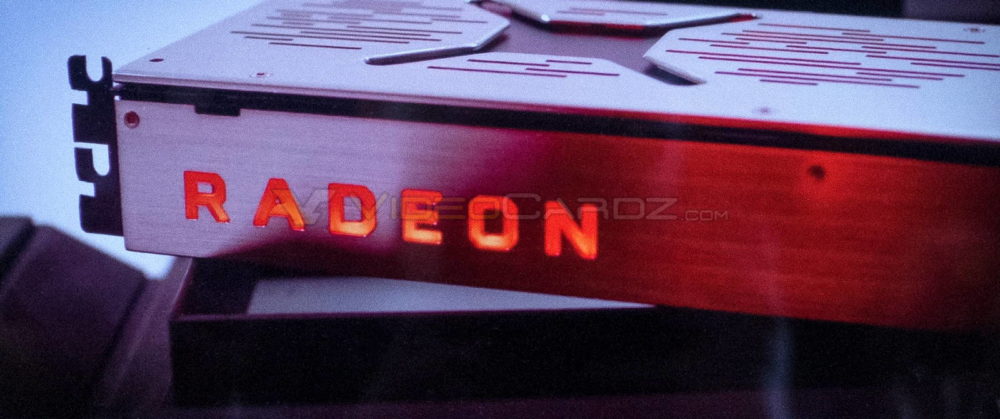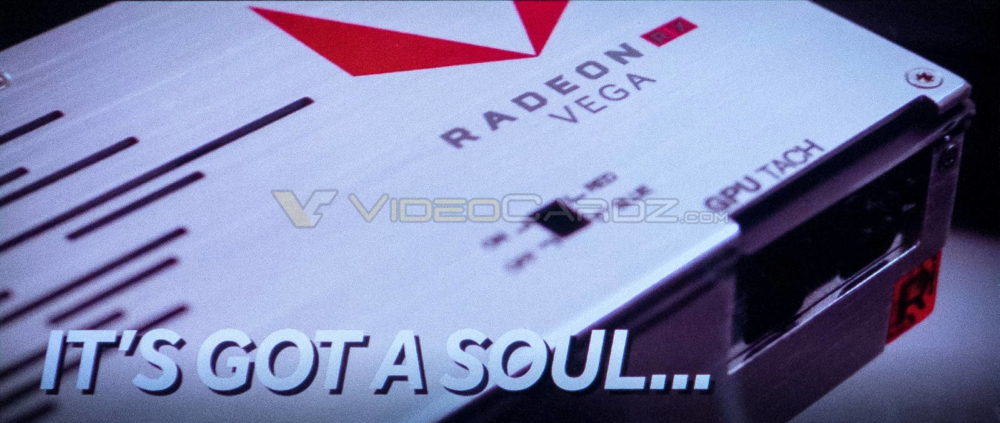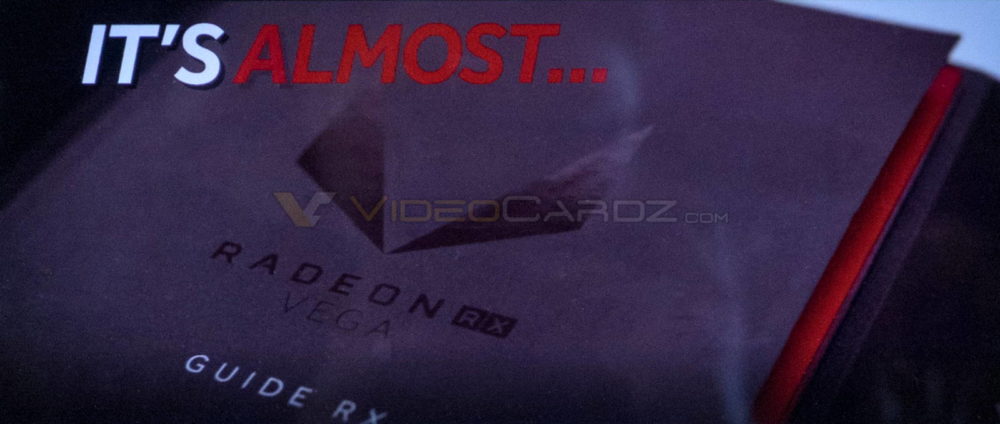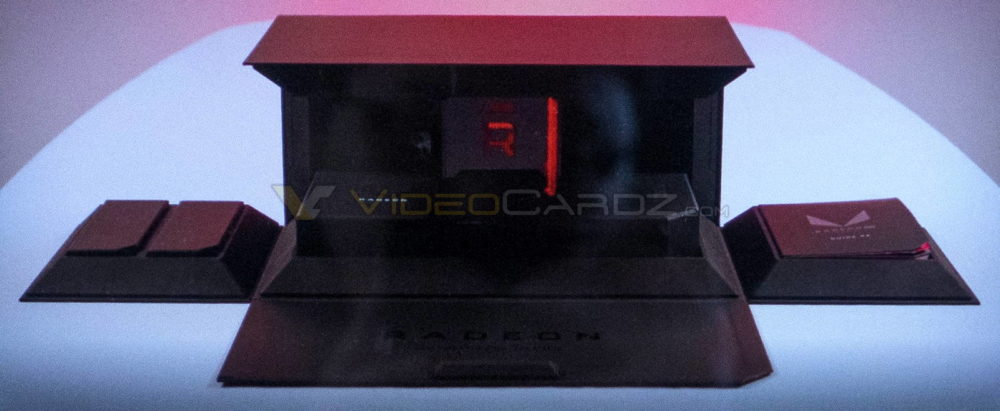Install the app
How to install the app on iOS
Follow along with the video below to see how to install our site as a web app on your home screen.
Note: This feature may not be available in some browsers.
You are using an out of date browser. It may not display this or other websites correctly.
You should upgrade or use an alternative browser.
You should upgrade or use an alternative browser.
AMD Vega 10, Vega 11, Vega 12 and Vega 20 Rumors and Discussion
Yea, the AMD/RTG Designteam have certainly stepped up lately. Probably well spent dollars too. I also like the new "transparent" dialog-oriented PR-approach. Ryzen is solid, and will only get better with time. Let's hope Vega also take's a similar leap in performance, or at least perf/watt.
Lately AMD really stepped up .... box designs
I mean, look at RYZEN reviewer pack and now this! I hope Vega performance matches it's packaging
I guess so. But more important than boxes are the cards themselves. Designing GPUs and VRAM is very hard, so I'll leave that aside, but PCBs and coolers shouldn't be that difficult, and AMD has been blowing it every time for a while. The HD 6900s were louder than the previous generation, particularly when crossfired, and felt kind of cheap; the 7970 was louder still and still looked like it was made of cheap-ass plastic, ditto for the R9 280X; the 290X still looked cheap, was hot and loud as hell, and would throttle frequently; the Fury X had coil whine issues, and the RX 480 was out of PCIe spec.
I mean, come on.
I guess so. But more important than boxes are the cards themselves. Designing GPUs and VRAM is very hard, so I'll leave that aside, but PCBs and coolers shouldn't be that difficult, and AMD has been blowing it every time for a while. The HD 6900s were louder than the previous generation, particularly when crossfired, and felt kind of cheap; the 7970 was louder still and still looked like it was made of cheap-ass plastic, ditto for the R9 280X; the 290X still looked cheap, was hot and loud as hell, and would throttle frequently; the Fury X had coil whine issues, and the RX 480 was out of PCIe spec.
I mean, come on.
Most of that would be a non-issue if we had a selection of custom boards to choose from at launch. Then AMD can use the shittiest components on their reference boards for all I care.
Most of that would be a non-issue if we had a selection of custom boards to choose from at launch. Then AMD can use the shittiest components on their reference boards for all I care.
I disagree. Reviewers generally review reference designs: that is what people read and remember.
D
Deleted member 13524
Guest
Reference RX Vega seems to be a blower design. Pretty much expected as all reference designs have been for many years.
Hopefully, AMD's cooler efforts on Wraith have transitioned on to Vega's cooler. RX480/470's stock heatsinks are pretty bad, even though the fans are silent enough.
And please, no AiO cooler to make card unnecessarily more expensive than needed.
Hopefully, AMD's cooler efforts on Wraith have transitioned on to Vega's cooler. RX480/470's stock heatsinks are pretty bad, even though the fans are silent enough.
And please, no AiO cooler to make card unnecessarily more expensive than needed.
ImSpartacus
Regular
Reference RX Vega seems to be a blower design. Pretty much expected as all reference designs have been for many years.
Hopefully, AMD's cooler efforts on Wraith have transitioned on to Vega's cooler. RX480/470's stock heatsinks are pretty bad, even though the fans are silent enough.
And please, no AiO cooler to make card unnecessarily more expensive than needed.
Am I crazy for wishing that AMD would continue their efforts to use CLCs for the 250W-tier reference cards?
Like I thought the Fury X was a novel example of compact high performance GPUs. And obviously the dual gpu stuff greatly benefits from that.
Maybe OEMs don't like having to integrate a GPU-dedicated radiator? And it's probably not strictly necessary from a performance perspective since Nvidia has used almost the same dual slot blower in their 250W-tier cards for like 3-4 years now. OEMs seem to appreciate that consistency (e.g. Falcon NW praised the Founder's Edition for that reason) so that might be what amd is going after.
D
Deleted member 13524
Guest
I see no major obstacle to the release of a water-cooled SKU along with an air-cooled one.
As long as the reference SKU is an air-cooled one, I don't have any problems with it either.
But the watercooled Fury X has had quite the trouble in going down in price. While the non-X Fury and Nano have come down to competitive levels, the Fury X is stuck at non-competitive prices and I think the main culprit really is the very expensive cooler.
Reference RX Vega seems to be a blower design. Pretty much expected as all reference designs have been for many years.
Hopefully, AMD's cooler efforts on Wraith have transitioned on to Vega's cooler. RX480/470's stock heatsinks are pretty bad, even though the fans are silent enough.
And please, no AiO cooler to make card unnecessarily more expensive than needed.
The the comparison between the old cooler and Wraith carried over to its GPUs, Vega would need to turn into a heftier 3-slot card. Wraith seems like a decent enough stock cooler, primarily by investing in a larger fan, more metal, and taking up space the prior cooler did not. There isn't much room to grow for Vega.
Perhaps the more metal portion could apply, or if Wraith does a little more in keeping the fans' manufacturing tolerances tighter.
Wraith also doesn't help in the fan profile department, nor does it really help in the historically broad variation in mating the coolers with the die.
Maybe opting for a blower for the premium product means AMD's confident that it doesn't need to force the silicon far enough that it was fighting for the corner of performance, leakage, power density, and temperature to eke out being mildly competitive like Fury X.
As long as the reference SKU is an air-cooled one, I don't have any problems with it either.
But the watercooled Fury X has had quite the trouble in going down in price. While the non-X Fury and Nano have come down to competitive levels, the Fury X is stuck at non-competitive prices and I think the main culprit really is the very expensive cooler.
Hmm, I think HBM condemns it to eternal "high-end" prices, regardless of its performance. Plus it's a pretty damn big die.
The the comparison between the old cooler and Wraith carried over to its GPUs, Vega would need to turn into a heftier 3-slot card. Wraith seems like a decent enough stock cooler, primarily by investing in a larger fan, more metal, and taking up space the prior cooler did not. There isn't much room to grow for Vega.
Perhaps the more metal portion could apply, or if Wraith does a little more in keeping the fans' manufacturing tolerances tighter.
Wraith also doesn't help in the fan profile department, nor does it really help in the historically broad variation in mating the coolers with the die.
Maybe opting for a blower for the premium product means AMD's confident that it doesn't need to force the silicon far enough that it was fighting for the corner of performance, leakage, power density, and temperature to eke out being mildly competitive like Fury X.
I may be in the minority here, but I really wouldn't mind 3-slot cards. I never use add-in cards that aren't for graphics, and I only ever use one, so I'd happily trade some space for lower temperatures and noise levels. Hell, make it 4 slots if you want, I'm OK with that.
D
Deleted member 13524
Guest
The the comparison between the old cooler and Wraith carried over to its GPUs, Vega would need to turn into a heftier 3-slot card. Wraith seems like a decent enough stock cooler, primarily by investing in a larger fan, more metal, and taking up space the prior cooler did not. There isn't much room to grow for Vega.
By cooler efforts I obviously meant in terms of R&D investment, expertise and budget. I obviously didn't mean that AMD should slap a Wraith into a RX Vega card.
I can't believe you took that literally, lol.
But yes, more metal, perhaps vapor chamber, more heatpipes and decent fan. Just look at the typical reference blowers on nvidia cards. They're excellent.
The Fury is being sold for close to $250 in many places and it has all that.Hmm, I think HBM condemns it to eternal "high-end" prices, regardless of its performance. Plus it's a pretty damn big die.
Perhaps if it didn't have a very expensive AiO, the Fury X could be sold for $350 or something.
I didn't take it literally, but what was the primary change that Wraith brought? The stock cooler left a lot of the design space for decent CPU solutions off the table, and Wraith sort of fattened up into the next step up in fan and fin size. How much more design effort did AMD need to invest beyond aping modestly larger coolers?By cooler efforts I obviously meant in terms of R&D investment, expertise and budget. I obviously didn't mean that AMD should slap a Wraith into a RX Vega card.
I can't believe you took that literally, lol.
The CPU fan's not a blower, and its RPM handling is entirely up to the motherboard.
AMD has had some spotty fan ramp algorithms, which Wraith doesn't have much to contribute towards.
AMD has had measurable instances of manufacturing variation for its fans and heatsink mounting, which a cooler that the buyer is meant to mount themselves doesn't help with.
The constraints of an economical blower reference card, where AMD has historically given lip-service to caring about slotting reliably into a multi-card setup, don't have so much room to grow.
If they want to invest money, they can try to sample the boards more often for noise, and hire an engineer without hearing loss.
Even then, Nvidia's noise levels start to become noticeable once the cards cross into the 250-300W range.But yes, more metal, perhaps vapor chamber, more heatpipes and decent fan. Just look at the typical reference blowers on nvidia cards. They're excellent.
If they want to invest money, they can try to sample the boards more often for noise, and hire an engineer without hearing loss.
Or is it the other way round? Hearing is lost due to sufficient exposure to AMD's blower designs?
ImSpartacus
Regular
I may be in the minority here, but I really wouldn't mind 3-slot cards. I never use add-in cards that aren't for graphics, and I only ever use one, so I'd happily trade some space for lower temperatures and noise levels. Hell, make it 4 slots if you want, I'm OK with that.
OEMs would crucify a >2-slot reference card. They build their machines to fit certain space, cooling and power parameters. I feel like I've mentioned it a million times, but there's a very good reason why Falcon Northwest praised the Founder's Edition program. OEMs love consistency.
Therefore, we got the middling Titan Z and basically nothing else attempt a >2-slot reference card.
The Fury is being sold for close to $250 in many places and it has all that.
Perhaps if it didn't have a very expensive AiO, the Fury X could be sold for $350 or something.
Those are the "regular" prices that you can get right now.
http://pcpartpicker.com/product/bt8H99/xfx-video-card-r9fury4tf9
We've seen better in the past six months.
Remember the Fury X went down to $300 a couple times.
https://slickdeals.net/f/9545340-xfx-amd-radeon-r9-fury-x-300-ar
And the Fury went down to $220 briefly and floated around $240 for months.
https://slickdeals.net/f/9525200-sapphire-nitro-radeon-r9-fury-219-ar-vco-newegg-12-12-only
So when stock allows, the fiji cards can get down in price. But they can also see very high pricing. The reasoning that I heard for this is phenomena was that retailers recognize that there's a population with an amd bias that wants the best amd stuff. In 2016, that was still fiji. So if you're a retailer with fiji stock that isn't going to be replenished, then you need to price it so it doesn't sell out so you can continue to satisfy the occasional amd fanboy. But likewise, if you overstocked (like Newegg and that Sapphire card), then you will need to price it to move.






